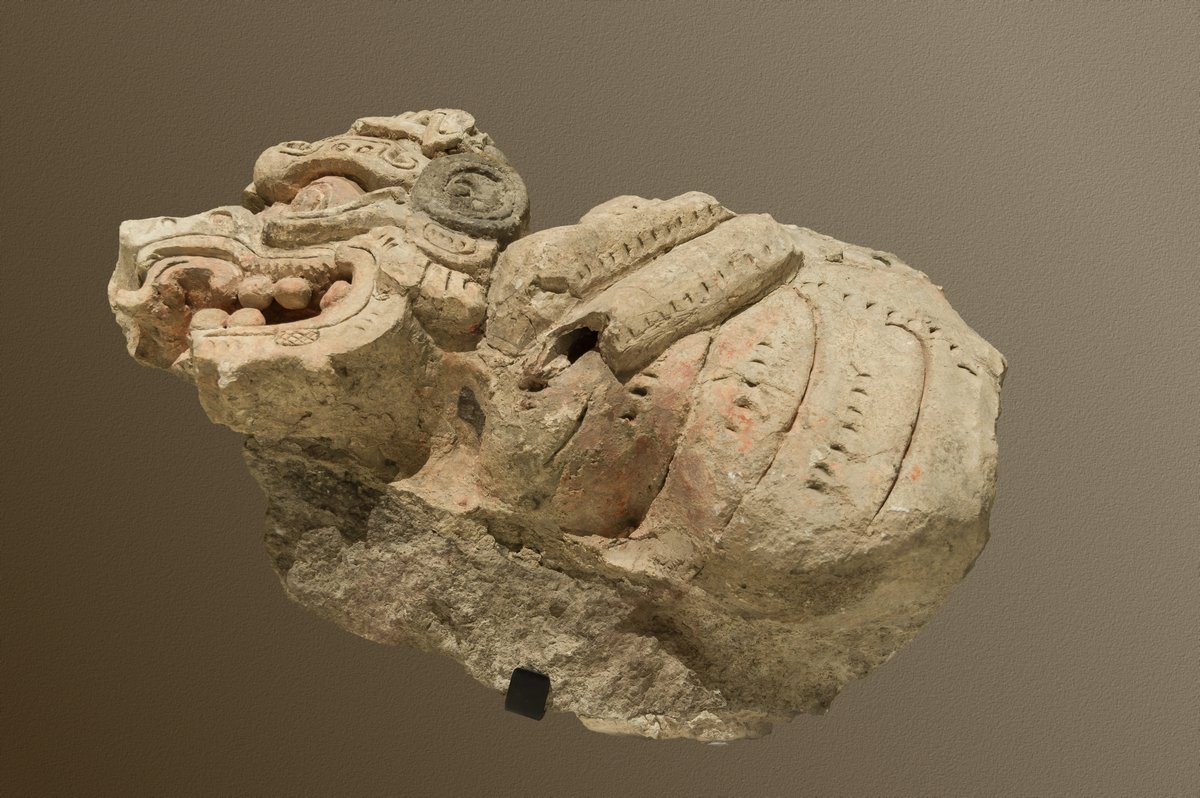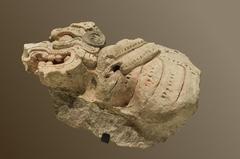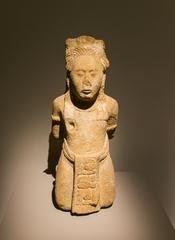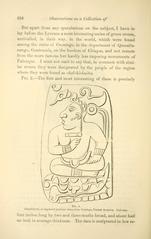
Toniná Chiapas Mexico: Visiting Hours, Tickets, and Historical Sites Guide
Date: 14/06/2025
Toniná, an awe-inspiring Maya archaeological site nestled in the highlands of Chiapas, Mexico, is a destination that rewards both history enthusiasts and adventurous travelers. With its towering acropolis—one of the tallest pyramids in the Americas—remarkable stucco reliefs, and rich dynastic history, Toniná stands as a testament to the ingenuity, artistry, and resilience of the Classic Maya civilization.
This detailed guide provides everything you need to know about visiting Toniná, including practical information on visiting hours, ticket prices, transportation, accessibility, and what to expect on-site. Drawing from authoritative sources such as INAH Toniná, Lonely Planet, and The Brain Chamber, this article ensures your trip to Toniná is both well-informed and memorable.
Table of Contents
- Introduction to Toniná: What to Expect
- Historical Overview
- How to Get to Toniná
- Visiting Hours and Ticket Information
- Navigating the Site and Key Highlights
- Guided Tours and Museum
- Facilities, Accessibility, and Safety
- Practical Tips for Visitors
- Frequently Asked Questions (FAQ)
- Nearby Attractions
- Conclusion and Final Thoughts
- References and Further Reading
Introduction to Toniná: What to Expect
Toniná, meaning “house of stone” in the Tzeltal Maya language, is located about 13–14 km east of Ocosingo, in a lush valley of the Chiapas highlands. Unlike the better-known sites of Palenque or Chichén Itzá, Toniná offers a less crowded, more immersive experience. Here, visitors encounter grand pyramidal structures, intricate carvings, and sweeping views of the surrounding landscape. The site is an ideal destination for those seeking both cultural enrichment and natural beauty.
Historical Overview
Toniná flourished between the 6th and 9th centuries CE, reaching the height of its power during the Late Classic period. The city is renowned for its massive acropolis—a stepped pyramid rising over 74 meters (243 feet) and featuring seven terraces that once supported temples, palaces, and administrative complexes (Ancient Origins). The site’s urban design represents advanced Maya engineering and cosmological planning.
Hieroglyphic inscriptions and monuments at Toniná reveal a complex dynastic history, marked by rivalry and warfare with neighboring Maya city-states such as Palenque. The site is also notable for its artistic achievements, including stucco reliefs depicting deities, rulers, and scenes from Maya mythology (The Brain Chamber).
Toniná’s strategic location and military prowess allowed it to dominate the region, and some of the last-known Maya Long Count dates (as late as 909 CE) are found here, signaling the end of the Classic Maya era.
How to Get to Toniná
From Ocosingo:
Toniná is easily reached by colectivo (shared van) or taxi from Ocosingo, with the ride taking about 20–30 minutes (Lonely Planet). Combis depart frequently from the market area, and taxis are available for a higher fare.
From San Cristóbal de las Casas or Palenque:
Visitors can drive (about 2–2.5 hours), take a bus to Ocosingo and transfer, or join an organized tour. Tours often include transportation, a guide, and stops at local attractions (Chiapas Tours y Expediciones).
By Car:
Renting a car offers flexibility. The roads are generally paved but winding; drive cautiously and travel during daylight hours, as roadblocks or protests can occasionally occur (SinPostal.com).
By Organized Tour:
Tours are available from San Cristóbal de las Casas, Tuxtla Gutiérrez, and Palenque. These often include breakfast and a guide, making them ideal for first-time visitors (Chiapas Tours y Expediciones).
Visiting Hours and Ticket Information
- Hours: Tuesday to Sunday, 8:00 AM – 5:00 PM (last entry at 4:30 PM). Closed Mondays and some holidays (INAH Toniná).
- Tickets:
- Adults: 70–80 MXN (approx. $4–$4.50 USD)
- Children under 13: Free
- Students/Seniors (with valid ID): Discounted
- Tickets are purchased at the entrance booth.
- Organized tour packages may include entrance fees.
It is recommended to check for updated ticket prices before visiting.
Navigating the Site and Key Highlights
Upon arrival, visitors cross a stream and ascend via a footpath to the Gran Plaza, the heart of Toniná. The acropolis rises dramatically above, with seven terraces and 260 steps leading to the summit (Veronika’s Adventure). The climb is moderately challenging but offers spectacular views.
Key Highlights:
- Acropolis Pyramid: The tallest in Mexico, with panoramic vistas.
- Ballcourt: One of several, highlighting the ritual importance of the Mesoamerican ballgame.
- Stucco Reliefs and Carvings: Including the famous “Mural of the Four Eras.”
- Templo de la Guerra Cósmica: (Temple of Cosmic War), reflecting the site’s martial history.
- Ritual Passageways: Labyrinthine corridors connecting platforms and temples.
- Toniná Site Museum: Located near the entrance, features artifacts, sculptures, and interpretive exhibits (SailingStoneTravel.com).
Guided Tours and Museum
Hiring a guide is highly recommended for a richer understanding of Toniná’s history and art. English-speaking guides are available at the entrance for about 300–400 MXN per group (Veronika’s Adventure).
Organized tours from major towns may include transportation, breakfast, and a guided tour of the ruins (Yonder Tours).
The site museum is a worthwhile stop before or after exploring the ruins, with displays of ceramics, bone, obsidian, and stucco works that illuminate Toniná’s dynastic and artistic heritage.
Facilities, Accessibility, and Safety
- Restrooms: Available near the entrance.
- Food & Drink: No vendors inside; bring your own water and snacks.
- Accessibility: The site is not wheelchair accessible. The pyramid climb is steep and may be strenuous for some visitors.
- Safety: The site is considered safe, but standard travel precautions apply. Avoid traveling after dark and keep valuables secure (Lonely Planet; SinPostal.com).
Practical Tips for Visitors
- Best Time to Visit: Dry season (November–April) for pleasant weather and safer hiking conditions (Drive Mexico Magazine).
- Duration: Allocate at least three hours to explore the site and museum.
- What to Bring: Sturdy shoes, sun protection, water, snacks, cash in small denominations, and a camera.
- Clothing: Lightweight, breathable clothing and a hat are recommended.
- Language: Spanish is predominant; English is limited outside tourist centers (JustGoExploring.com).
- Currency: Bring Mexican pesos for entrance and local purchases; ATMs are in Ocosingo.
Frequently Asked Questions (FAQ)
Q: What are Toniná’s visiting hours?
A: Tuesday to Sunday, 8:00 AM – 5:00 PM; closed Mondays and major holidays.
Q: How much does it cost to visit?
A: Adult tickets cost 70–80 MXN; discounts for students and seniors.
Q: Is Toniná accessible for people with limited mobility?
A: The site requires climbing steep stairs and uneven terrain; accessibility is limited.
Q: Are guided tours available?
A: Yes, at the entrance and through local tour operators.
Q: Can I bring food and drinks?
A: Yes, but there are no vendors inside. Bring your own water and snacks.
Q: Is photography allowed?
A: Yes, for personal use. Drone use may be restricted—check on arrival.
Nearby Attractions
- Ocosingo Market: Experience local culture and cuisine, including Ocosingo cheeses (SinPostal.com).
- Corralito Waterfalls: A natural highlight in the region (Chiapas Tours y Expediciones).
- Other Maya Sites: Palenque, Yaxchilán, and Bonampak are within reach for further exploration of Chiapas’ Maya heritage.
Conclusion and Final Thoughts
Toniná offers a uniquely immersive journey into Maya civilization, artistry, and history. Its towering pyramids, intricate carvings, and tranquil setting provide an unforgettable experience for every visitor. With accessible ticket prices, well-marked trails, and the possibility of guided tours, Toniná is both an educational and adventurous destination.
Plan ahead by checking current visiting hours and ticket prices, preparing for the physical demands of the site, and bringing essential supplies. Leveraging resources like the INAH Toniná website and the Audiala app can further enhance your visit.
Toniná’s enduring grandeur and the stories etched in its stones await your discovery.
References and Further Reading
- INAH Toniná
- The Brain Chamber
- Lonely Planet
- Ancient Origins
- Rutatrenmaya.com
- MexicoHistorico.com
- Veronika’s Adventure
- Yonder Tours
- SailingStoneTravel.com
- Drive Mexico Magazine
- SinPostal.com
- JustGoExploring.com
- Chiapas Tours y Expediciones
- VoyageMexique.info
- TheTravel.com
- TravelArtWay.com
- All That’s Interesting
- National Geographic


